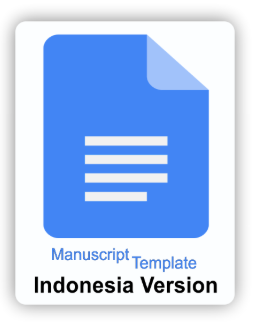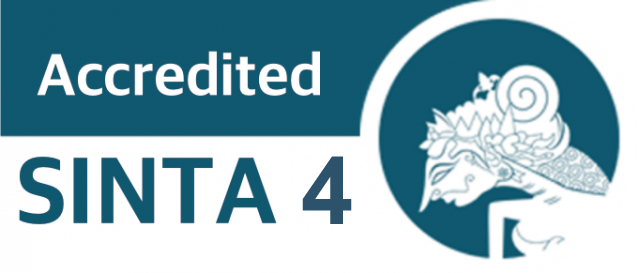The Influence of Technostress on Cyberslacking Among Emerging Adults University Students: An Indonesian Context
DOI:
https://doi.org/10.21831/ep.v4i2.63668Keywords:
cyberslacking, emerging adult, technostressAbstract
The rapid development of technology implementation in the educational processes has brought benefits and challenges, especially for university students. These challenges would then cause students to experience technostress, which might lead to cyberslacking behavior in the classroom. Meanwhile, study on technostress and cyberslacking still needs to be expanded, especially among emerging adults. The emerging adult developmental stage requires tasks that could also lead to stress. Therefore, this research aimed to investigate the influence of technostress on cyberslacking among emerging adult university students. The current study surveyed 121 emerging adult university students using an online questionnaire. Participants completed the demographic scale, the Technostress scale, and the Cyberslacking scale. Data were analyzed using the Structural Equation Modelling (SEM) technique. Results showed a slight trend toward the significance of technostress in predicting cyberslacking behavior among emerging adult university students. Nevertheless, this study contributes to the currently limited studies on technostress and cyberslacking. Further suggestions include operationalizing the technostress definition and involving additional possible mediator variables.
References
Akbulut, Y., Dursun, í–. í–., Dí¶nmez, O., & Åžahin, Y. L. (2016). In search of a measure to investigate cyberloafing in educational settings. Computers in Human Behavior, 55(2), 616–625. https://doi.org/10.1016/j.chb.2015.11.002
Al-Fudail, M., & Mellar, H. (2008). Investigating teacher stress when using technology. Computers & Education, 51(3), 1103–1110. https://doi.org/10.1016/j.compedu.2007.11.004
Ardelia, V., & Dewi, T. K. (2018). Intensi berhenti merokok pada wanita emerging adult ditinjau dari prediktor theory of planned behavior. INSAN Jurnal Psikologi dan Kesehatan Mental, 2(2) , 111. https://doi.org/10.20473/jpkm.V2I22017.111-119
Arnett, J. J. (2000). Emerging adulthood: A theory of development from the late teens through the twenties. American Psychologist, 55(5), 469–480. https://doi.org/10.1037/0003-066X.55.5.469
Arnett, J. J. (2014). Emerging adulthood: The winding road from the late teens through the twenties (Second Edition). Oxford University Press.
Ayyagari, R., Grover, V., & Purvis, R. (2011). Technostress: Technological antecedents and implications. MIS Quarterly, 35(1), 831–858. https://doi.org/10.2307/41409963
Brod, C. (1984). Technostress: The human cost of the computer revolution. Basic Books.
Chen, Y., Chen, H., Andrasik, F., & Gu, C. (2021). Perceived stress and cyberloafing among college students: The mediating roles of fatigue and negative coping styles. Sustainability, 13(8). 1-12. https://doi.org/10.3390/su13084468
Condinata, F., Satiadarma, M. P., & Suyasa, P. T. Y. S. (2021). Psychological distress among emerging adults: A descriptive study. Proceedings of the 1st Tarumanagara International Conference on Medicine and Health (TICMIH 2021). 195–198. https://doi.org/10.2991/ahsr.k.211130.033
Cooper, C., Dewe, P., & O'Driscoll, M. (2001). Organizational stress: A review and critique of theory, research, and applications. https://doi.org/10.4135/9781452231235
Edwards, J., Caplan, R., & Harrison, V. (1998). Person-environment fit theory: Conceptual foundations, empirical evidence, and directions for future research. In Theories of organizational stress. (pp. 28–67). Oxford University Press. https://research.manchester.ac.uk/en/publications/person-environment-fit-theory-conceptual-foundations-empirical-ev
Edwards, J., & Shipp, A. (2007). The relationship between person-environment fit and outcomes: An integrative theoretical framework. Perspectives on Organizational Fit, 1(1), 209–258. https://psycnet.apa.org/record/2007-15682-007
Faul, F., Erdfelder, E., Lang, A.-G., & Buchner, A. (2007). G*Power 3: A flexible statistical power analysis program for the social, behavioral, and biomedical sciences. Behavior Research Methods, 39(2), 175–191. https://doi.org/10.3758/BF03193146
Gí¶kí§earslan, Åž., Mumcu, F. K., HaÅŸlaman, T., & í‡evik, Y. D. (2016). Modelling Smartphone addiction: The role of smartphone usage, self-regulation, general self-efficacy and cyberloafing in university students. Computers in Human Behavior, 63(1), 639–649. https://doi.org/10.1016/j.chb.2016.05.091
Grashinta, A., Gentary, A., & Syihab, A. (2022). Stres dan prokrastinasi akademik pada mahasiswa pelaku cyberslacking. Jurnal Ilmiah Psikologi MIND SET, 13(2), 176-188.
https://doi.org/10.35814/mind set.v13i02.4271
Hair, J., Hollingsworth, C. L., Randolph, A. B., and Chong, A. Y. L. (2017). An updated and expanded assessment of PLS-SEM in information systems research. Ind. Manage. Data Syst. 117(1), 442–458. https://doi.org/10.1108/IMDS-04-20160130
Kian Yeik, K., & Poon, W. C. (2022). Students' cyberslacking behaviour in e-learning environments: The role of the Big Five personality traits and situational factors. 15(2), 521-536. https://doi.org/10.1108/JARHE-11-2021-0437
Koay, K. Y., & Poon, W. C. (2022). Understanding students' cyberslacking behaviour in e-learning environments: is student engagement the key?. International Journal of Human–Computer Interaction, 39(13), 2573–2588. https://doi.org/10.1080/10447318.2022.2080154
Kulikowski, K., PrzytuÅ‚a, S., SuÅ‚kowski, Å., & RaÅ¡ticová, M. (2022). Technostress of students during covid-19 a sign of the time?: Technostress of students. Human Technology, 18(3), 234–249. https://doi.org/10.14254/1795-6889.2022.18-3.3
Li, X., & Liu, D. (2022). The Influence of technostress on cyberslacking of college students in technology-enhanced learning: Mediating effects of deficient self-control and burnout. International Journal of Environmental Research and Public Health, 19(18), 11800. https://doi.org/10.3390/ijerph191811800
Luqman, A., & Dhir, A. (2021). Enterprise social media and cyber-slacking: A Kahn's model perspective. 103405.
Margaretha, M., Sherlywati, S., Monalisa, Y., Mariana, A., Junita, I., Martalena, M., Iskandar, D., & Nur, N. (2021). Cyberslacking behavior and its relationship with academic Performance: A study of students in Indonesia. European Journal of Educational Research, 10(4), 1881–1892. https://doi.org/10.12973/eu-jer.10.4.1881
MiheliÄ, K. K., Lim, V. K. G., & Culiberg, B. (2023). Cyberloafing among gen z students: The role of norms, moral disengagement, multitasking self-efficacy, and psychological outcomes. European Journal of Psychology of Education, 38(2), 567–585. https://doi.org/10.1007/s10212-022-00617-w
Navarro, D. J., & Foxcroft, D. R. (2018). Learning statistics with jamovi: A tutorial for psychology students and other beginners. https://doi.org/10.24384/HGC3-7P15
Ragu-Nathan, T. S., Tarafdar, M., Ragu-Nathan, B. S., & Tu, Q. (2008). The consequences of technostress for end users in organizations: Conceptual development and empirical validation. Information Systems Research, 19(4), 417–433. https://doi.org/10.1287/isre.1070.0165
Rana, N. P., Slade, E., Kitching, S., & Dwivedi, Y. K. (2019). The IT way of loafing in class: Extending the theory of planned behavior (TPB) to understand students' cyberslacking intentions. Computers in Human Behavior, 101(1), 114–123. https://doi.org/10.1016/j.chb.2019.07.022
Simanjuntak, E., Fajrianthi, F., & Purwono, U. (2019). Skala cyberslacking pada mahasiswa. Jurnal Psikologi, 18(1), 55-68. https://doi.org/10.14710/jp.18.1.55-68
Simanjuntak, E., Nawangsari, N. A. F., & Ardi, R. (2022). Academic cyberslacking: Why do students engage in non-academic internet access during lectures?. Psychology Research and Behavior Management, 15(1), 3257–3273. https://doi.org/10.2147/PRBM.S374745
Taneja, A., Fiore, V., & Fischer, B. (2015). Cyber-slacking in the classroom: Potential for digital distraction in the new age. Computers & Education, 82(1), 141–151. https://doi.org/10.1016/j.compedu.2014.11.009
Tarafdar, M., Pullins, E., & Ragu-Nathan, T. (2014). Technostress: Negative effect on performance and possible mitigations. Information Systems Journal, 25(2), 103-132. https://doi.org/10.1111/isj.12042
Vega-Muñoz, A., Estrada-Muñoz, C., Andreucci-Annunziata, P., Contreras-Barraza, N., & Bilbao-Cotal, H. (2022). Validation of a measurement scale on technostress for university Students in Chile. International Journal of Environmental Research and Public Health, 19(21), 1-14. https://doi.org/10.3390/ijerph192114493
Wang, X., & Li, B. (2019). Technostress among university teachers in higher education: A study using multidimensional person-environment misfit theory. Frontiers in Psychology, 10(1), 1-13. https://www.frontiersin.org/articles/10.3389/fpsyg.2019.01791
Wang, X., Tan, S. C., & Li, L. (2020a). Measuring university students' technostress in technology-enhanced learning: Scale development and validation. Australasian Journal of Educational Technology, 36(4), 96–112. https://doi.org/10.14742/ajet.5329
Wang, X., Tan, S. C., & Li, L. (2020b). Technostress in university students' technology-enhanced learning: An investigation from multidimensional person-environment misfit. Computers in Human Behavior, 105(1), 1-36. https://doi.org/10.1016/j.chb.2019.106208
Whelan, M. E., Velardo, C., Rutter, H., Tarassenko, L., & Farmer, A. J. (2019). Mood monitoring over one year for people with chronic obstructive pulmonary disease using a mobile health system: Retrospective analysis of a randomized controlled trial. JMIR MHealth and UHealth, 7(11), e14946. https://doi.org/10.2196/14946
Yildiz Durak, H., & Saritepeci, M. (2019). Occupational burnout and cyberloafing among teachers: Analysis of personality traits, individual and occupational status variables as predictors. The Social Science Journal, 56(1), 69–87. https://doi.org/10.1016/j.soscij.2018.10.01
Zhao, G., Wang, Q., Wu, L., & Dong, Y. (2022). Exploring the structural relationship between university support, students' technostress, and burnout in technology-enhanced learning. The Asia-Pacific Education Researcher, 31(4), 463–473. https://doi.org/10.1007/s40299-021-00588-4
Zhao, L. (2021). The impact of social media use types and social media addiction on subjective well-being of college students: A comparative analysis of addicted and non-addicted students. Computers in Human Behavior Reports, 4(1), 1-7. https://doi.org/10.1016/j.chbr.2021.100122
Downloads
Published
How to Cite
Issue
Section
License
Epistema allows readers to read, download, copy, distribute, print, search, or link to its articles' full texts and allows readers to use them for any other lawful purpose. The journal allows the author(s) to hold the copyright without restrictions. Finally, the journal allows the author(s) to retain publishing rights without restrictions
- Authors are allowed to archive their submitted articles in an open access repository
- Authors are allowed to archive the final published article in an open access repository with an acknowledgment of its initial publication in this journal

This work is licensed under a Creative Commons Attribution-ShareAlike 4.0 Generic License.











